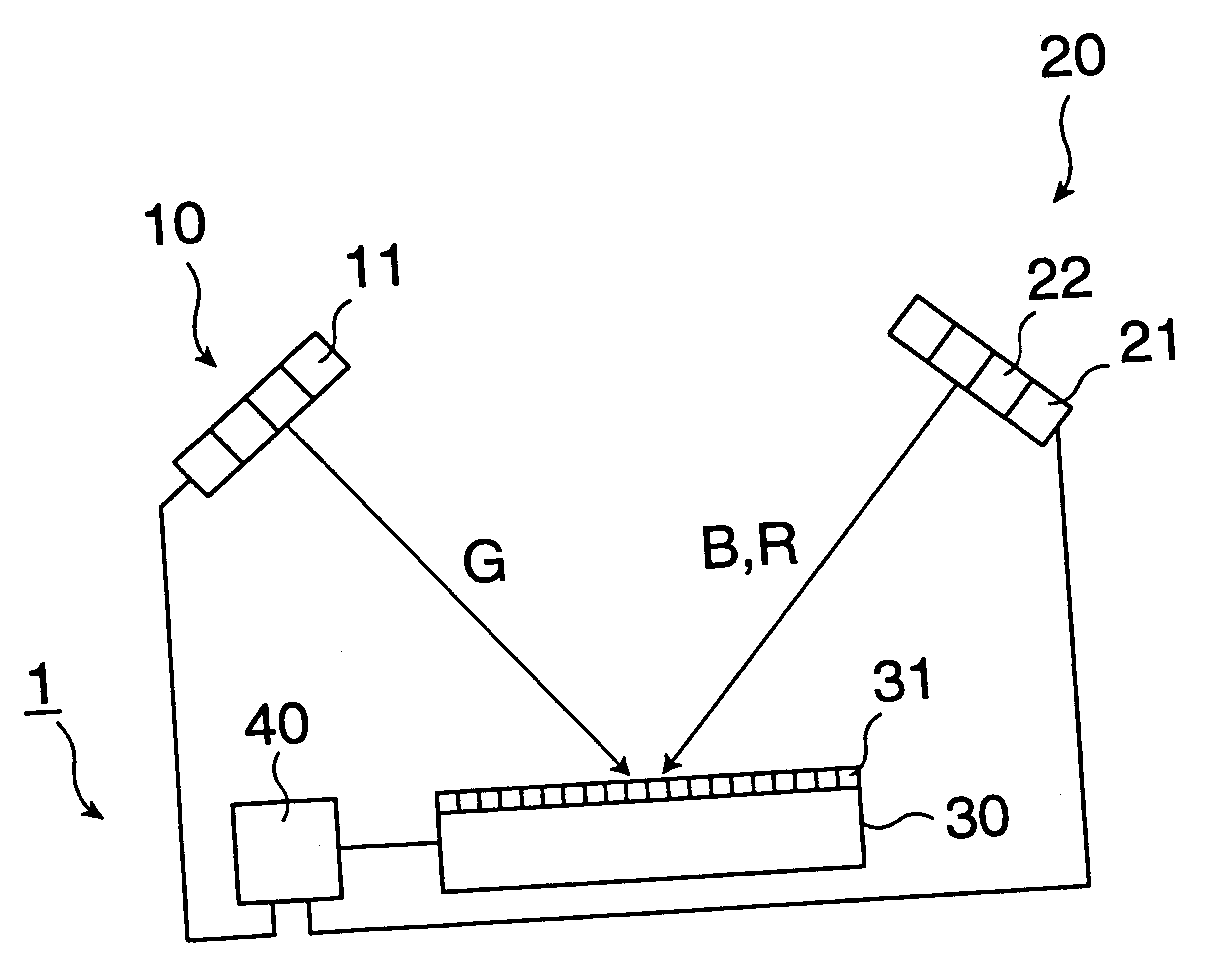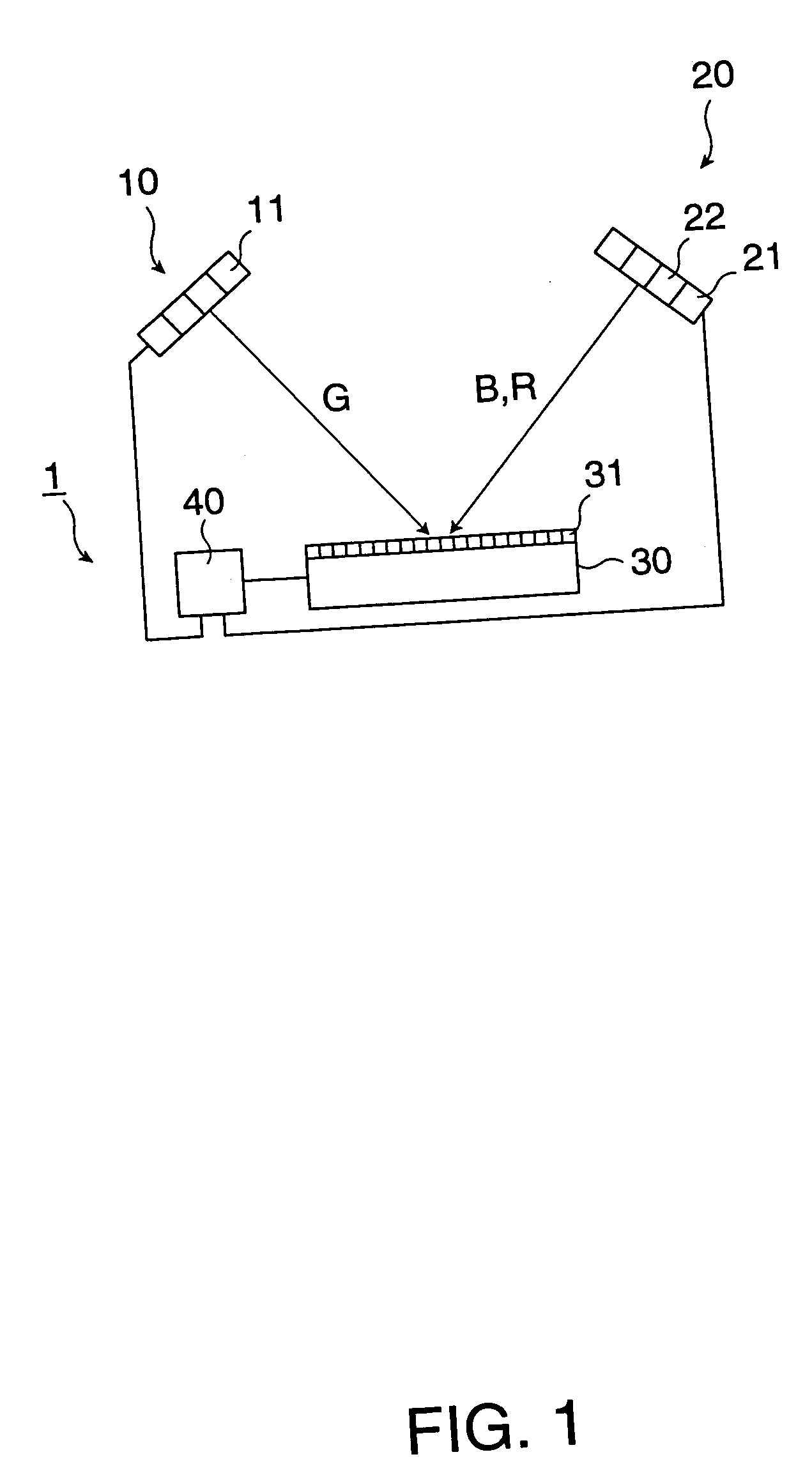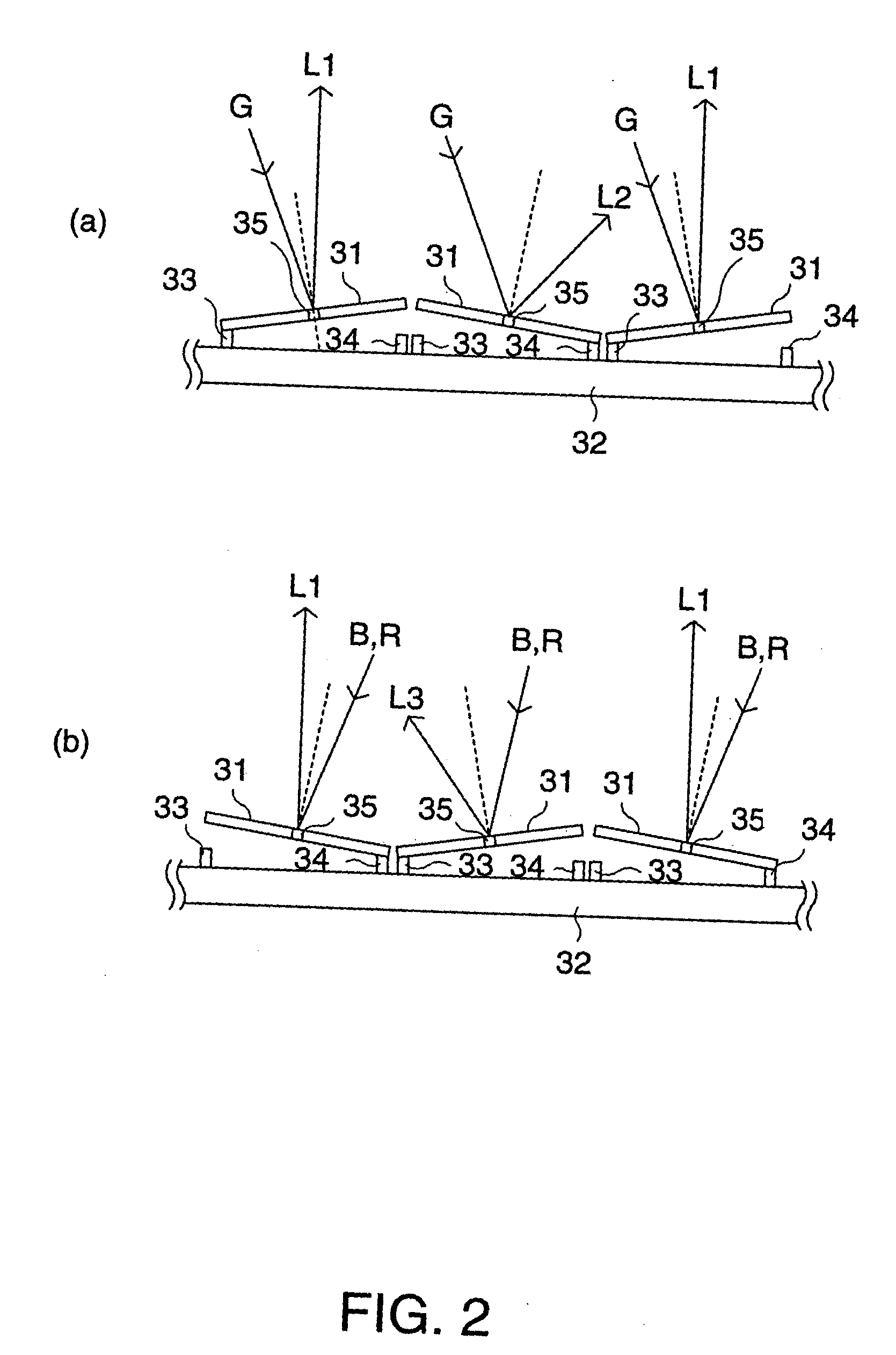Image display device and projector
a technology which is applied in the field of image display device and projector, can solve the problems of reducing the amount of effective usable luminous flux, the inability to effectively use the luminous flux the increase in the size of the light source, so as to prevent the production of efficiently illuminate, and prevent wasteful illumination luminous flux
- Summary
- Abstract
- Description
- Claims
- Application Information
AI Technical Summary
Benefits of technology
Problems solved by technology
Method used
Image
Examples
third embodiment
[0104]FIG. 8 is a drawing showing a summarized configuration of a projector 100 having an image display device according to the present invention. A light-source 110 can include a G-ray light-emitting element 110G for supplying a G-ray, which is a first color-ray in a first wavelength region, an R-ray light-emitting element 110R for supplying an R-ray, which is a second color-ray in a second wavelength region different from the first wavelength region, and a B-ray light-emitting element 110B for supplying a B-ray. As these light-emitting elements, an LD, an LED, an organic EL element, and so forth are used.
[0105] Light from the R-ray light-emitting element 110R, the G-ray light-emitting element 110G, and the B-ray light-emitting element 110B enters a tilt-mirror device 140 via a fly-eye lens array 120. By the fly-eye lens array 120, light from the light-emitting elements for each color-ray 110R, 110G, and 110B illuminates the substantially entire region of the tilt-mirror device 140...
sixth embodiment
[0122]FIG. 11 is a drawing showing a summarized configuration of an image display device 400 according to the present invention. Like reference characters designate like other portions common to the embodiments described above and a detailed description is omitted. According to the embodiment, a direct-viewing image display device is provided. Each color-ray from the light source 110 enters a light-guide plate 410 as a backlight ray. The backlight ray enters a transmissive liquid crystal light valve 420 as a spatial modulation element via the light-guide plate 410. The transmissive liquid crystal light valve 420 modulates incident light to be emitted by transmission or non-transmission thereof corresponding to an image signal. Thereby, full-color images can be obtained when being viewed in the direction A.
seventh embodiment
[0123] A projector having a solid light-emitting element, such as a light-emitting diode, as a light source will be described. In the light source having the solid light-emitting element, the life of the light source itself is long and maintenance due to a burned-out light bulb is not necessary. Furthermore, since the response speed in on-off switching of the solid light-emitting element is fast, color balance can be adjusted by the adjustment of on-off timing for each color. Also, different from a white light source, a color filter is not necessary and light is efficiently utilized without noise. Therefore, by adopting the solid light-emitting element as a light source, a compact projector capable of projecting high-quality bright color images can be provided.
[0124] However, light quantity of the individual solid light-emitting elements is not enough to project images, so that it is preferable to arrange a plurality of solid light-emitting elements for acquiring sufficient quantit...
PUM
 Login to View More
Login to View More Abstract
Description
Claims
Application Information
 Login to View More
Login to View More - R&D
- Intellectual Property
- Life Sciences
- Materials
- Tech Scout
- Unparalleled Data Quality
- Higher Quality Content
- 60% Fewer Hallucinations
Browse by: Latest US Patents, China's latest patents, Technical Efficacy Thesaurus, Application Domain, Technology Topic, Popular Technical Reports.
© 2025 PatSnap. All rights reserved.Legal|Privacy policy|Modern Slavery Act Transparency Statement|Sitemap|About US| Contact US: help@patsnap.com



